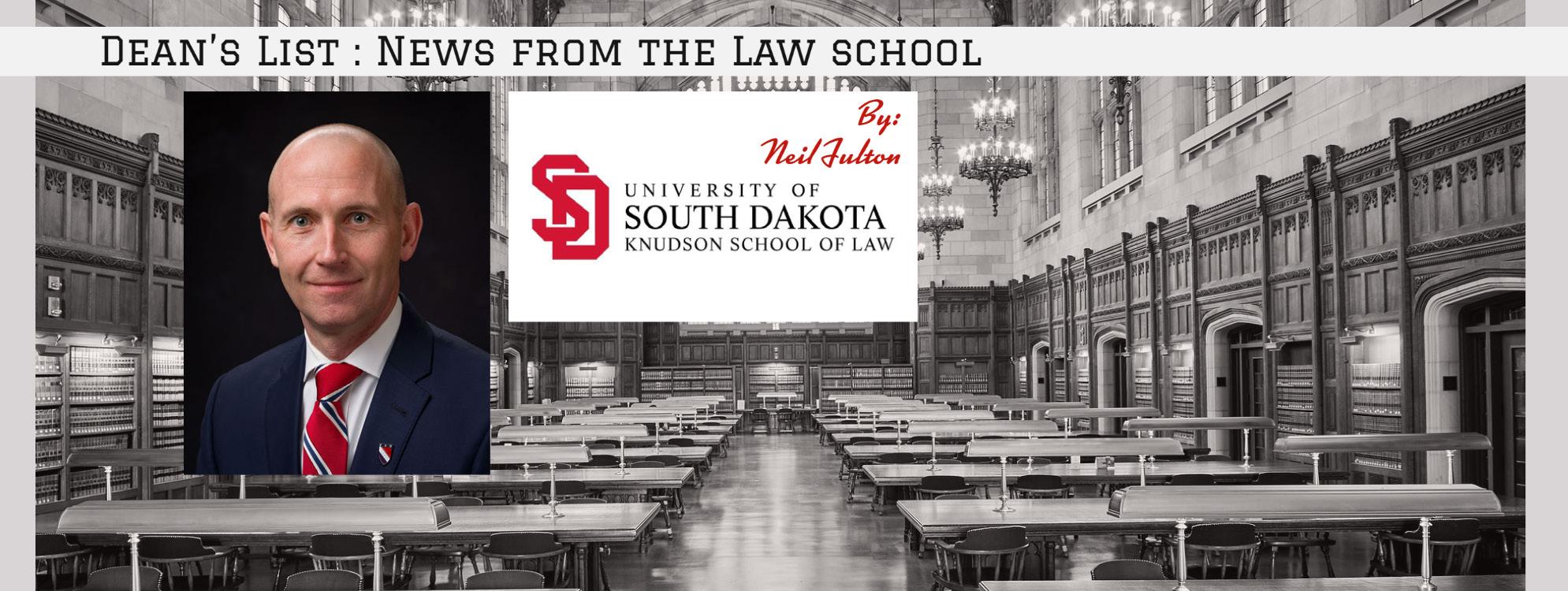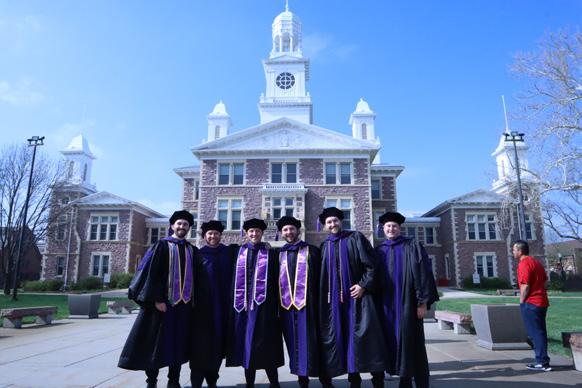
5 minute read
Fellows of the South Dakota Bar Foundation
Grades play an essential role in law school life. Law schools across the United States take many approaches to grading. It is important to have an appropriate and understood grading system. To that end, the faculty here has been engaged in an evaluation and reformation of our grading policies and procedures over the last year. I am happy to share the outcome and reasoning behind those discussions.

Our discussion started with the question of why we assign grades. Grades can serve many purposes, but faculty identified two that predominate for the Law School: differentiating among students and communicating with students and potential employers. These purposes drove decisions about our grade scale, range, and distribution.
We made initial decisions about our grade scale and range from this foundation of shared purposes. The Law School has long had a numeric grading scale that ranges from 50 to 99. Faculty decided that this scale and range fit our purposes well. More numeric grade options allow finer differentiation between student performances than a four-point scale. This helps achieve differentiation within our smaller classes. It also advances the purpose of communication because it retains a grading system that students and employers have become generally familiar with over many years. Faculty did decide to discontinue assigning letter grades to number ranges, however. We agreed that letter grades were misleading because 80 and 89 were both nominally B's while actually being more comparable to a grade only one number away but assigned a different letter grade. Additionally, the numbers did not appear in official transcripts. Going forward, the Law School will assign numeric grades without attachment to letter grades. Faculty concluded that for communication purposes, cumulative averages and class rank were more useful than letter grades for both students and employers.
Having established a grade scale, the faculty turned its deliberation to grade distribution. Faculty believed it was important to have some system that compelled grade distribution for several reasons. First, compulsory distribution helps normalize grades across instructors and classes. Second, distribution checks grade inflation.
For some time, the Law School has required the average grade in upper-level classes to be under 89. First-year classes did not have such a requirement. Faculty preferred this “not to exceed average grade” system over a forced curve or other systems of distribution. We concluded that this checked grade inflation and normalized grades while still allowing faculty to achieve their distribution in somewhat different ways. For example, a required class may have a broader distribution at the top and bottom ends, and a smaller elective class may cluster in a smaller band without being unreasonably high in the aggregate. In other words, while this system creates an apples-to-apples comparison, not every apple must be a Red Delicious.
Faculty also determined that it was important to expand the reach of the “not to exceed average grade” system and to tailor its application to certain realities. Reach was addressed by applying the rule to all classes regardless of type (i.e., doctrinal and clinical) and to impose it for first-year courses. First-year faculty have traditionally coordinated to establish a target average grade, and that practice will likely remain, but there is now a formal policy capping averages as well. The expectation of student growth was addressed by setting the maximum average for first-year courses at 84 and 86 for upper-level courses. While this slightly lowers the permissible maximum in upper-level courses, it is close to the recent average of averages. As a result, it should not work a dramatic reduction in grades across the board. This should also allow for a bit more recognition of truly exceptional performance at the top of the scale, check grade inflation, and do both while not excessively disrupting the historic understating of what is a poor, average, or exceptional grade at the Law School. In other words, the overall system will remain familiar if some of the details are different.
Faculty approved a maximum average of 86 for firstyear legal writing. This was based on the conclusion that the process of multiple drafts with feedback placed a higher premium on student growth and effort than in other first-year classes. A slightly higher maximum average recognized that distinction while keeping all first-year grades within a reasonable proximity.













Given the nature of small sample sizes, faculty also approved different maximum averages in small classes. Classes with fifteen or fewer students have a maximum average of 88. Classes with fewer than five students (typically independent studies) have no maximum. The reality is that in smaller classes, a lower average can be unrealistic and somewhat unfair—particularly if highly motivated or exceptional students enroll.
Faculty also approved a variance process for truly exceptional circumstances. The dean may approve a variance from the not to exceed averages in upperlevel classes upon the demonstration of exceptional circumstances. While that term is not defined, in my opinion, it would likely require an enrollment of disproportionately high-achieving students or some truly exceptional performances across the board. Even with a variance, the average grade cannot exceed 90 or the cumulative grade average of the students enrolled in the class, whichever is higher.
I want to share some final thoughts on this process and its outcome. First, our grading policies are important, but it is also important that potential employers understand them. We are developing an information sheet that students can provide employers (particularly out-ofstate or irregular employers) to ensure they understand the system. I will continue to take opportunities to discuss these changes when I am speaking publicly so there is a broad understanding and awareness of the changes. Please do not hesitate to reach out with any questions you have about the Law School grading system.
Finally, I must compliment the Law School faculty on their work through this process. This was a year-long conversation that involved both deep cultural questions about what we want to be as a law school and numbingly detailed questions about grade scales and policies. These discussions were vigorous, thoughtful, and energizing. Faculty cared about these topics and demonstrated that care through the discussions. But these discussions were consistently collegial and courteous without losing their rigor and vigor. Passionate debates can turn sour. That never happened because the Law School is truly exceptional and collegial. The entire process was a great reminder that this truly is a community of excellence, service, and leadership, and I am incredibly fortunate to be part of it.









YOU ARE CORDIALLY INVITED TO ATTEND THE INVESTITURE CEREMONY of
LAURA L. KULM ASK
UNITED STATES BANKRUPTCY JUDGE FOR THE DISTRICT OF SOUTH DAKOTA
FRIDAY, JUNE 23, 2023
3:00 P.M.
U.S. COURTHOUSE 400 SOUTH PHILLIPS AVENUE, COURTROOM 1 SIOUX FALLS, SOUTH DAKOTA
RECEPTION IMMEDIATELY FOLLOWING
RESPOND BY JUNE 16, 2023, TO: rick_entwistle@sdb.uscourts.gov
Northern Plains Weather Services, LLC


Matthew J. Bunkers, Ph.D. | 605.390.7243

•Certified Consulting Meteorologist (CCM)
What does a CCM do? Check out: https://npweather.com/forms/CCM-article.pdf

•30+ years of weather/forecasting experience
•Consulting, reports, depositions, & testimony
•Specialties: forensic meteorology, weather & forecasting, radar, satellite, severe storms, hail, rainfall & flooding, fog, winter weather, heavy snow, icing, slips & falls, fire weather, high winds, lightning verification, applied climate & meteorology, and agriculture weather https://npweather.com








